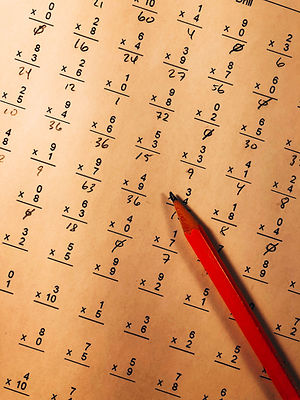
MathBait™ Multiplication
Squares
Share this resource!
In this activity, students are introduced to perfect squares. By exploring their skip counting table, students identify the numbers along the diagonal while also connecting skip counting to the number of squares on the multiplication table.
Details
Resource Type
Activity
Primary Topic
Dual Processing
Unit
2
Activity
11
of
13
Remind students about the previous activities such as filling out their skip counting table with everything except 7's and how 7 groups of 7 was the only empty space. Or, when doing turn arounds, every one had a turn around except when the groups and the number of items in each group were the same. It turns out, these are special numbers they will learn more about later. In this activity they will see one reason why they are special.
Provide students with an empty multiplication chart. They do not need to fill it in. Instead, they are going to draw squares, all starting in the top left corner. Remind students that a square is a shape with all sides having the same length (avoid using the phrases "all sides are the same" or "all sides are equal") and corners that form L's.
Give each student 10 colors if possible. Together, outline squares on the table. Start with the smallest square, ask students what the smallest square we can make is. This is of course a square with side length 1. Starting at the top left, outline a 1×1 square on the table. Continue for 2 and 3. At this point, students should have the hang of things to complete the remaining squares.

Now have students work together or individually. Ask them to count how many little 1 by 1 squares are in each outline. They should write their total in the bottom right square. Do the first few together. As the initial square is 1 by 1, there is only a single square so we write 1. The next square (colored orange here) has 4 smaller squares inside it, we write a 4 in the bottom right corner. The third square holds 9, so we write a 9. Allow students to complete the remainder of the table. When they finish have them discuss with a partner what they notice.

Students should see that these squares are exactly the values on our multiplication table! Explain that each square is n groups of n items using examples. For instance, focus in on the 9 square. Notice that there are 3 rows each with 3 squares in them. Tell students we call these special numbers perfect squares as we can make squares with the same number of groups and items in the group.
The goal of this activity is to introduce students to a new way of looking at the table and introduce the terminology of perfect squares. They need not know all the squares or be able to list them. To reinforce the idea, students may play fingers to show that 2 fingers counting by 2's make 4 and 3 fingers counting by 3's make 9, and so on. It is not necessary to go beyond 2, 3, and 5.
The material on this page is copyrighted by MathBait™. Please use and enjoy it! MathBait™ provides a temporary license for Non-Commercial purposes. You are not permitted to copy, distribute, sell, or make derivative work without written permission from MathBait™.
Tell us what you think!
Click to rate this activity

